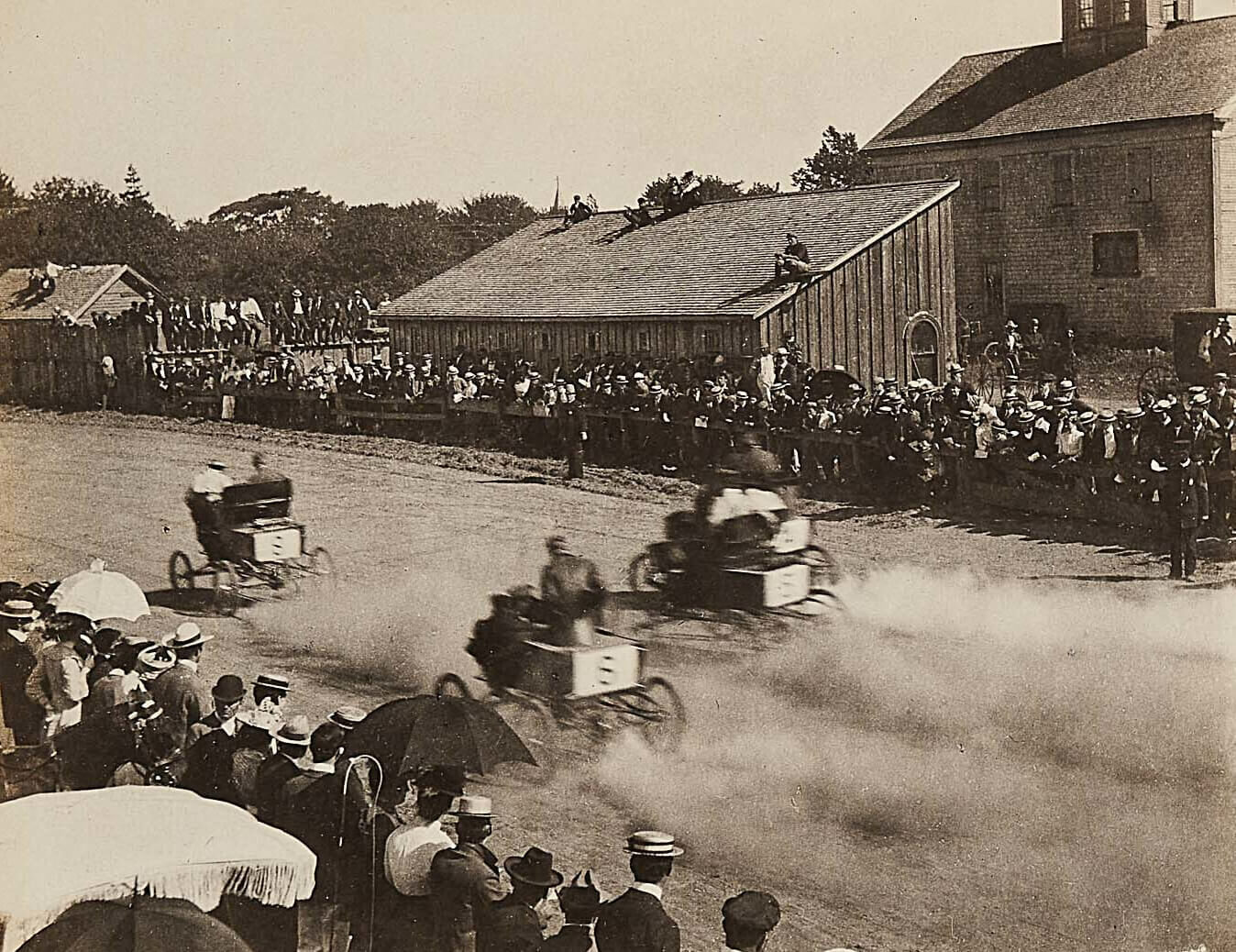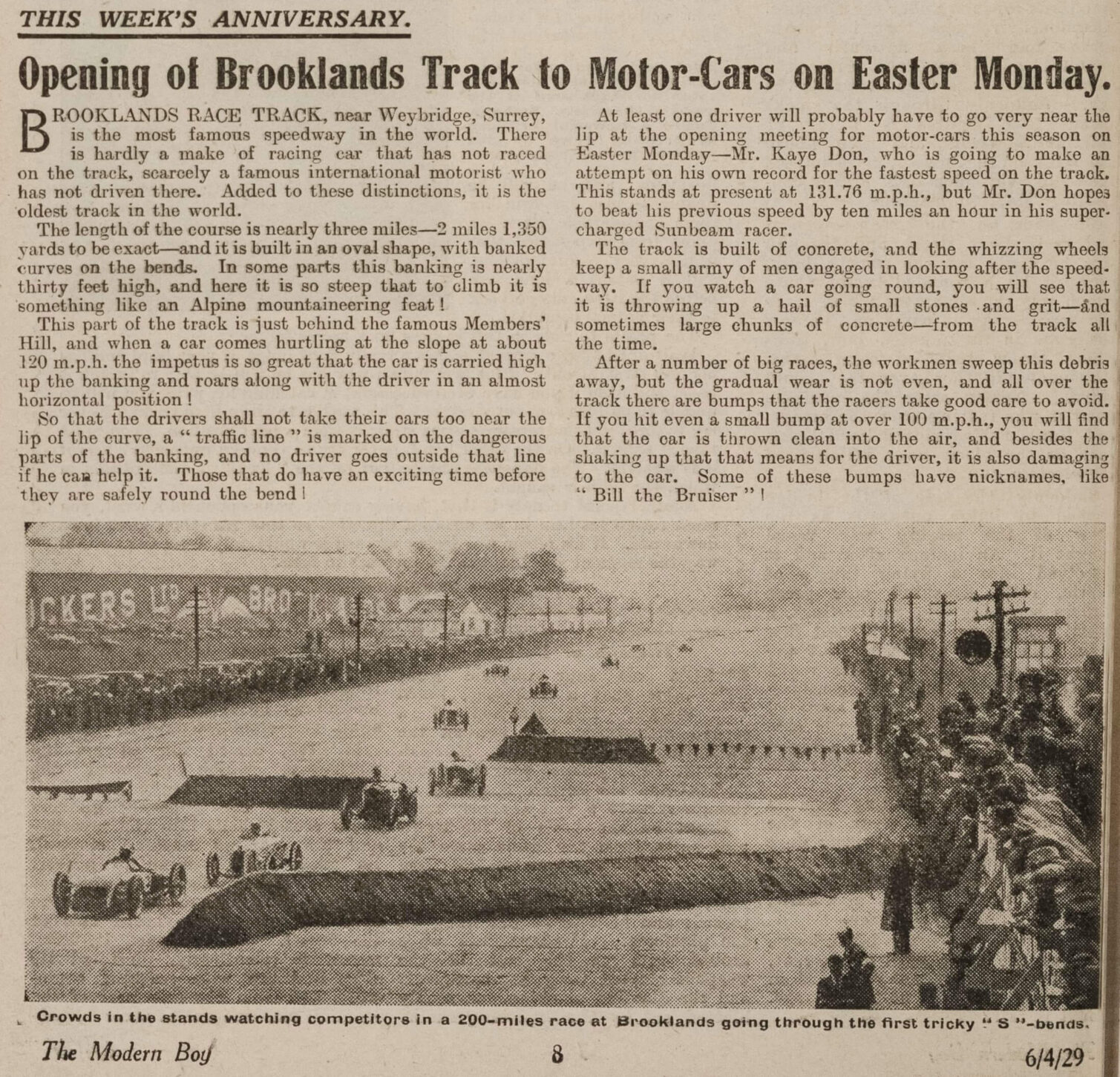Go, go, go: The early days of motorsport in The Gilded Age and Interwar Culture
On Sunday 20th March the lights will go out for the start of the first Grand Prix of the 2022 Formula 1 season.
After one of the closest, and most controversial, championships in recent memory in 2021 and with the arrival of new cars and regulations which may mix things up, it is an exciting time to be an F1 fan. The self-proclaimed pinnacle of motorsport, Formula 1 has always been equated with glitz, glamour and the rich and famous, as much as it ever was with going very fast in increasingly elaborate tarmacked circles. Several of our recent resources contain mentions of the sport in the early days – namely The Gilded Age and the Progressive Era and Interwar Culture – and it is these that I want to explore to get us all ready for the new F1 season.
Within The Gilded Age and Progressive Era is a collection of photographs from photographer Henry O. Havemeyer which include some taken at an automobile race in Newport, Rhode Island in 1901. While we cannot be certain, it is possible, due to Havemeyer’s close links to the Vanderbilt family, that this race might have been connected to William Kissam Vanderbilt II, who was one of the first organisers of motor racing competitions in the United States. From these photos, you can gain a sense of what an event motor racing was, with large crowds within touching distance of the cars as they hurtled past, and a band ready to strike up music when needed.

Newport Race 1901 © Newport Historical Society. Further reproduction is prohibited without permission.
Motor racing was just beginning to gain traction, with the high-speed action attracting a growing number of spectators, sponsors and manufacturers. The glory of winning a race was the best proof that a car manufacturer had built a good car, but national pride was also at stake. The first international motoring competition was the Gordon Bennett International Trophy which was competed for by national teams in cars that had to be built entirely in the country they represented. Crucially, in the frantic technological battle amongst the empires before World War One, winning the trophy was proof that your nation was in the ‘race’.
Some in Britain were concerned that the country was falling behind in this regard; in 1903, over half of the world’s cars were built in France and this was largely put down to the hostile environment towards automobiles in Britain. The British public was not typically enthusiastic about motor vehicles and there was a strict 20mph speed limit enforced across the country. As motor racing at this time was mostly conducted on public roads, this ensured that not only was it hard for race organisers in Britain to put on races, but it was also difficult for British car manufacturers to build and test world-beating cars.

Opening of Brooklands Track to Motor-Cars on Easter Monday © Content provided by The British Library Board. Further reproduction is prohibited without permission.
This all changed with the opening of Brooklands in 1907, the first purpose-built racing circuit in the world, the anniversary of which is celebrated in this issue of The Modern Boy from February 1929 in Interwar Culture. Brooklands revolutionised motor racing in Britain; at its peak 275,000 spectators could watch a race there, and as The Modern Boy notes ‘[t]here is hardly a make of racing car that has not raced on the track, scarcely a famous international motorist who has not driven there.’ Nowadays - long after the technology race of the war years - Britain is often seen as one of the leading countries in motorsport, with over half of the Formula 1 teams in the paddock based in the UK, and laying claim to such great F1 heroes such as Stirling Moss, Nigel Mansell and Lewis Hamilton.
About the collections
The Gilded Age and Progressive Era and Interwar Culture are out now.
Recent posts

The blog highlights American Committee on Africa, module II's rich documentation of anti-apartheid activism, focusing on the National Peace Accord, global solidarity, and student-led divestment campaigns. It explores the pivotal role of universities, protests, and public education in pressuring institutions to divest from apartheid, shaping global attitudes toward social justice and reform.

This blog examines how primary sources can be used to trace the impact of young voices on society, particularly during pivotal voting reforms in the UK and the US. Explore materials that reveal insights into youth activism, intergenerational gaps, and societal perceptions, highlighting their interdisciplinary value for studying youth culture, activism, and girlhood across history.
